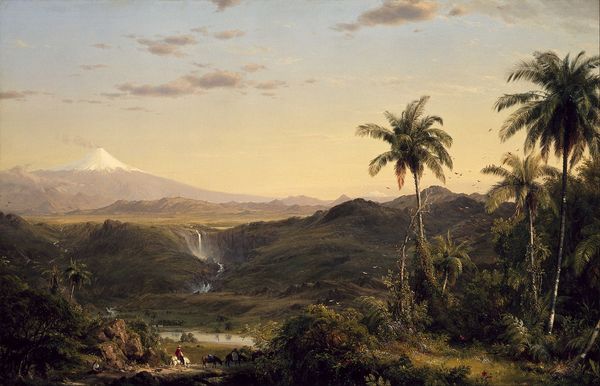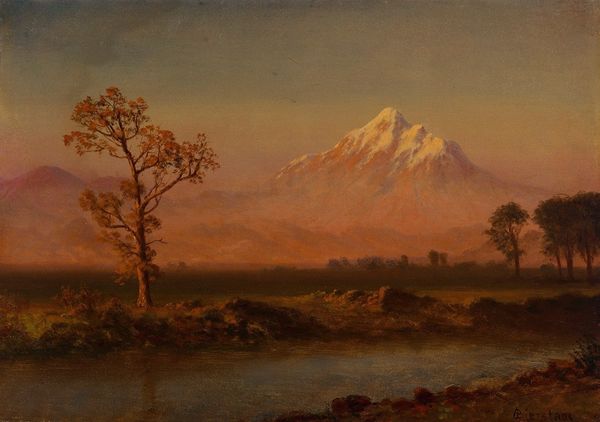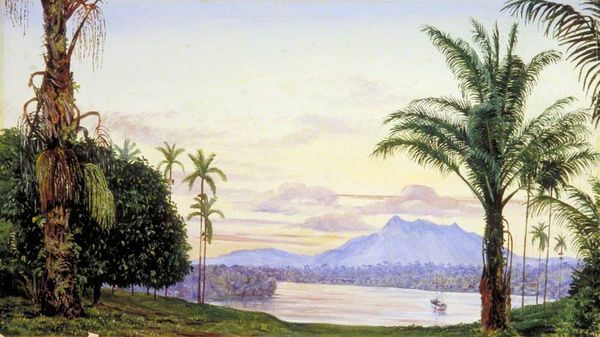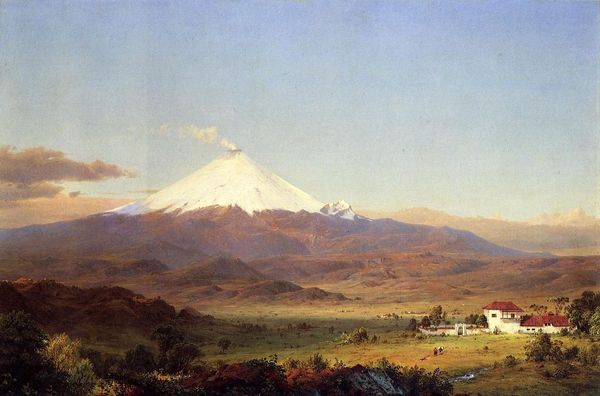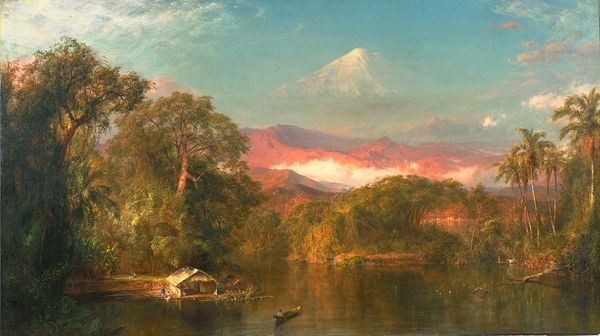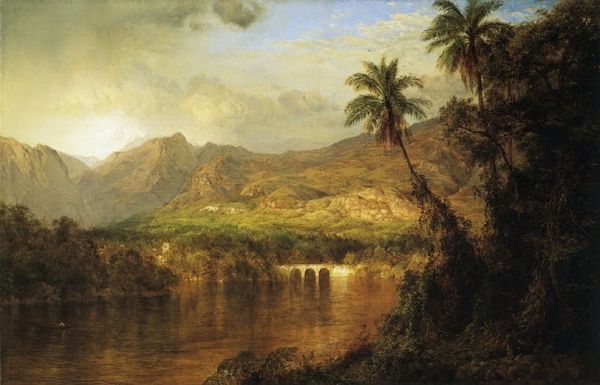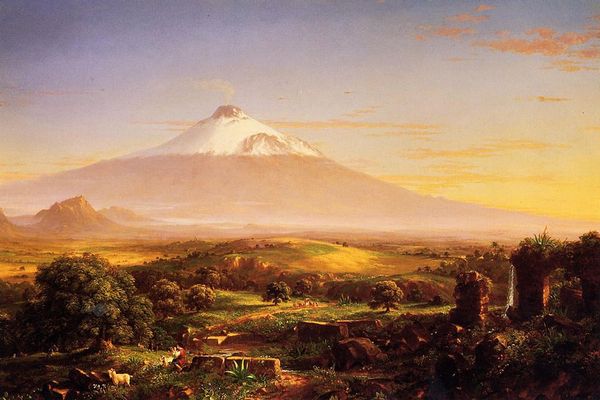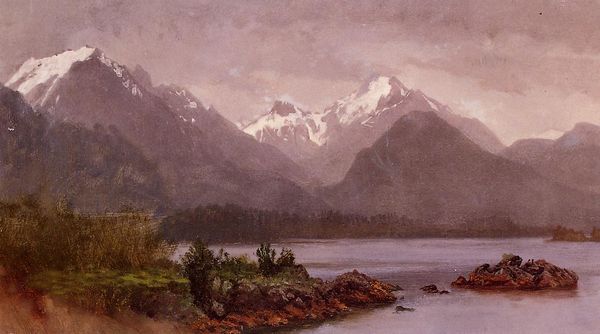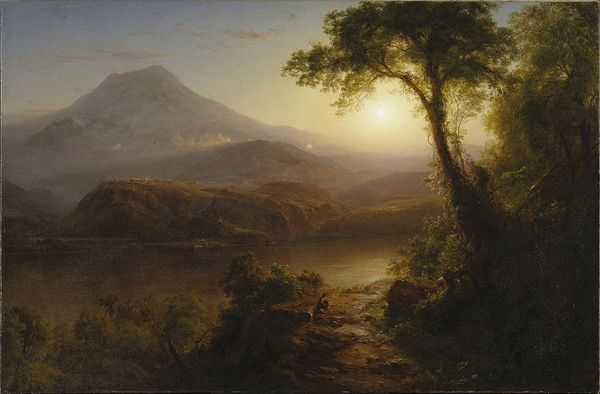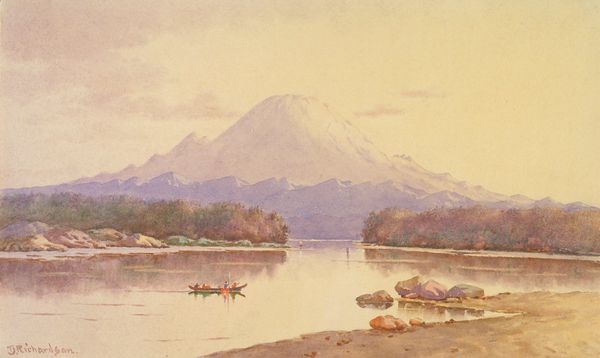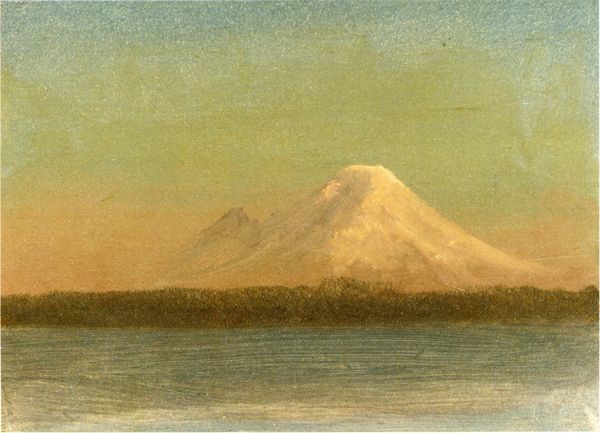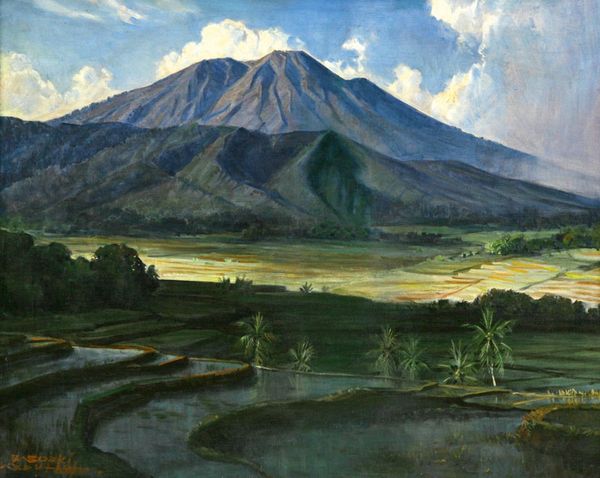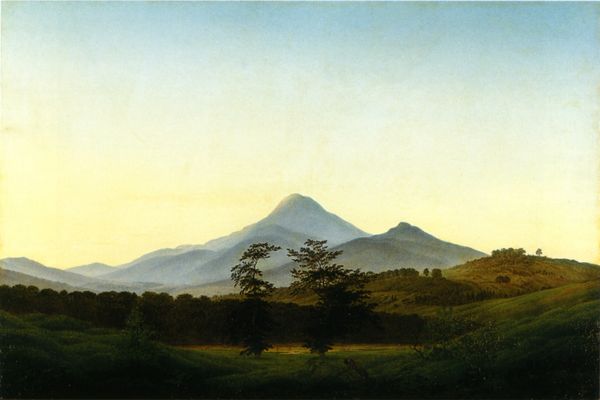
Copyright: Public domain
Frederic Edwin Church made Tamaca Palms with oil on canvas. This is an image that encourages us to consider how the aesthetic appeal of landscape painting can mask the economic and political realities of its time. Church was a leading figure in the Hudson River School, a group of landscape painters who celebrated the American wilderness. Here, he depicts a panoramic view of the Andes Mountains from present day Colombia. In the mid-19th century, this region was undergoing significant social and economic change, driven by the extraction of natural resources and expansion of trade. Church's painting, while seemingly apolitical, is embedded in this history. The palm trees, the snow-capped mountains, and the figures in the boat become symbols of exoticism and adventure, which attracted investors and tourists, while conveniently ignoring the impact of these activities on the local population and environment. To understand art like this, we can turn to travel writing, economic data, and other archival materials. The meaning of art is always contingent on its moment.
Comments
No comments
Be the first to comment and join the conversation on the ultimate creative platform.

